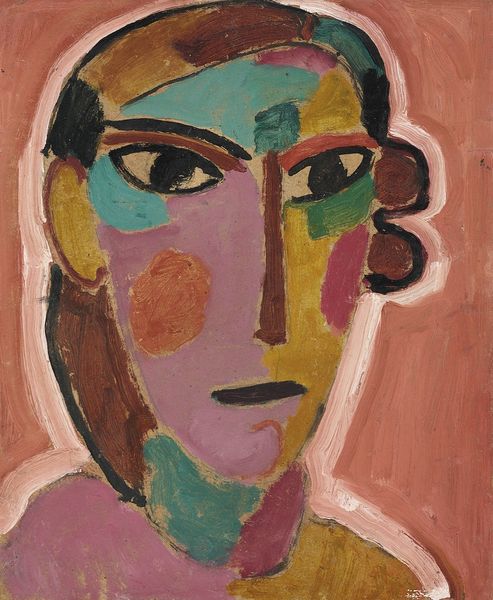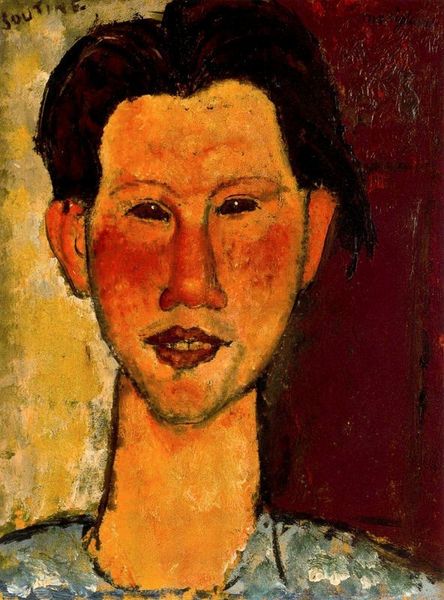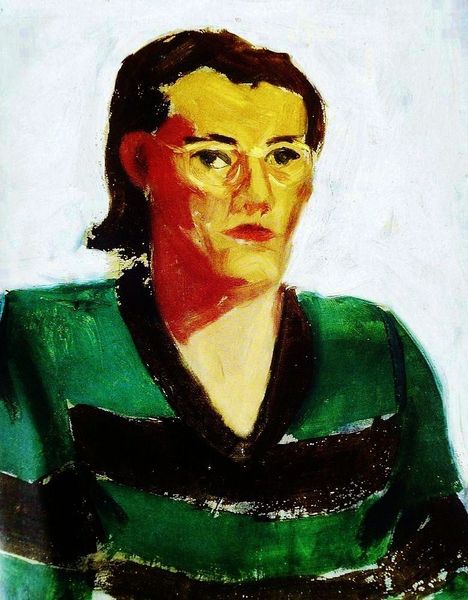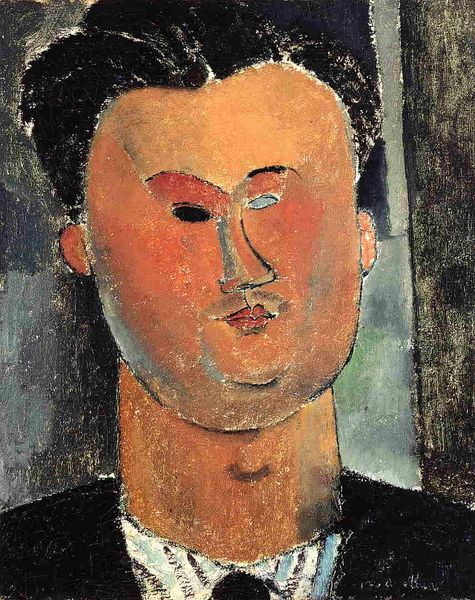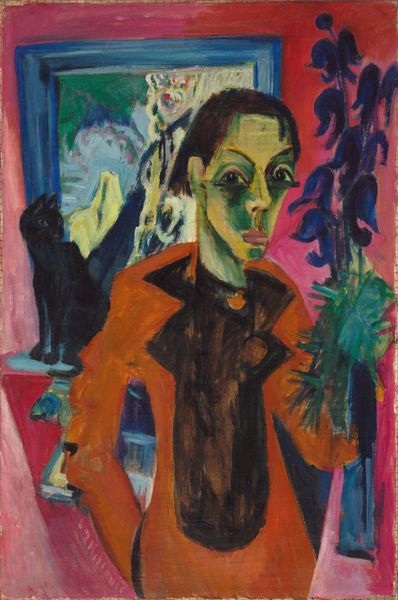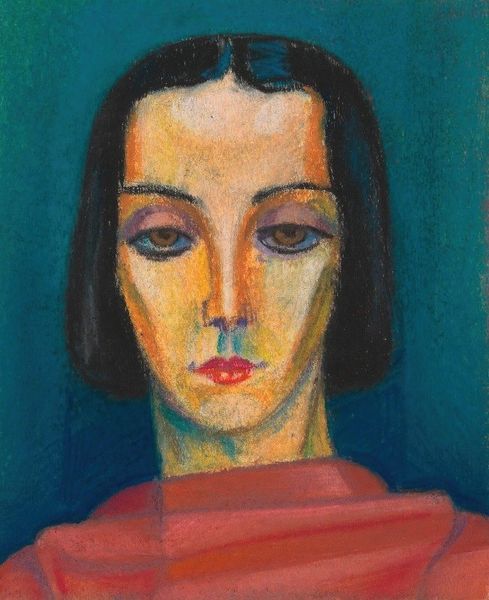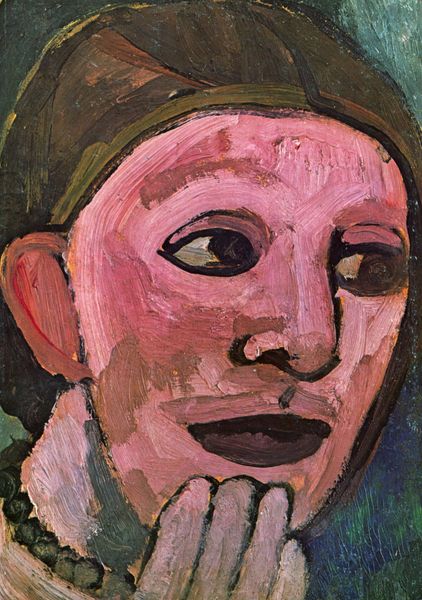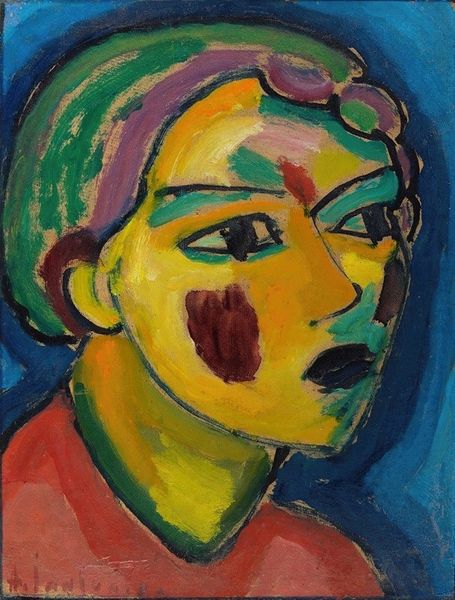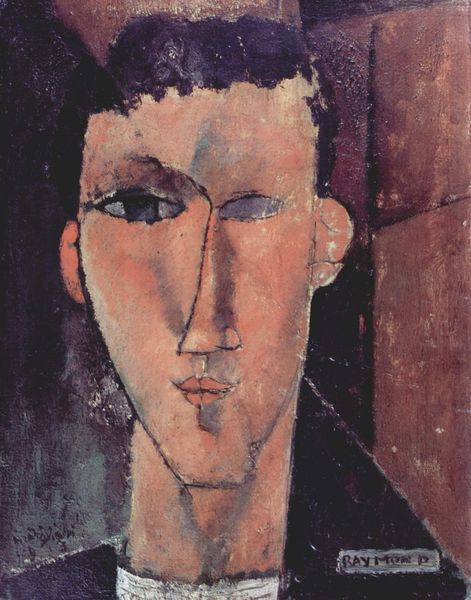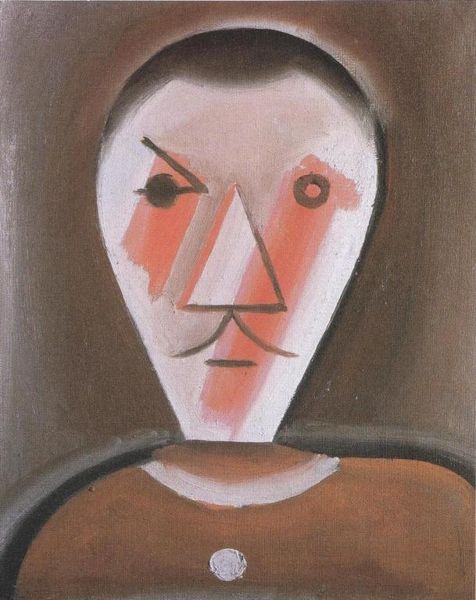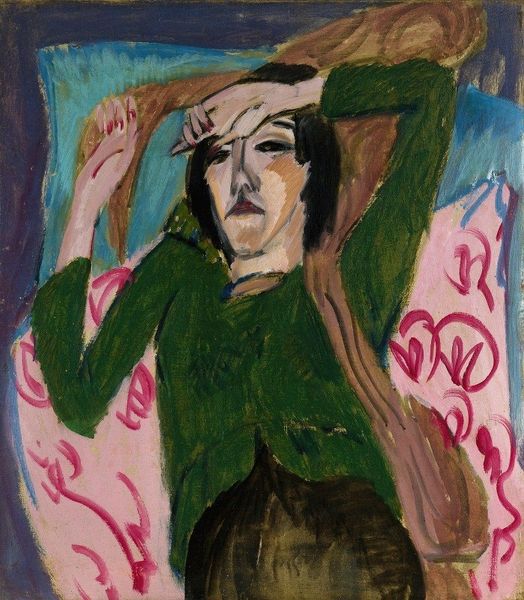
oil-paint
#
portrait
#
self-portrait
#
oil-paint
#
german-expressionism
#
neo expressionist
#
acrylic on canvas
#
expressionism
#
portrait drawing
#
monochrome
Copyright: Public Domain: Artvee
Curator: This is Ernst Ludwig Kirchner’s "Self Portrait," painted around 1925. Look closely at the almost brutal simplicity of the planes of color. Editor: Yes, it’s quite striking, isn't it? Almost mask-like. I’m immediately drawn to how the odd palette creates such an unsettling emotional atmosphere, a certain anxiety. Curator: Kirchner's work from this period reflects a time of both physical and mental struggle for the artist. Consider the visible brushstrokes in this oil painting. How might they contribute to this sense of disquiet? Editor: The layering is interesting. It suggests both a frantic pace and a kind of insistent reworking, a need to keep returning to the image. I see evidence of the tools here: the size and movement, marks that were made quickly and intuitively, maybe with broad brushes or a palette knife. What impact does his choice of support or technique have on this particular piece? Curator: Given his context – a German Expressionist grappling with post-war trauma and his own declining health – you can interpret the harshness as a direct reflection of his inner turmoil, his broken psyche made visible through material and mark. What do you make of the almost naive, clumsy quality of the execution? It is interesting, given his skill as a draughtsman and printmaker. Editor: It points to a rejection of academic polish in favour of raw emotionality. Consider too the positioning of the yellow vessel in the background. It becomes more than a prop; it’s a looming, almost oppressive presence, another voice within the painting's narrative. Curator: The object seems somewhat disconnected from Kirchner himself, but definitely adds another layer of meaning... a question for another day. Seeing the world through the Expressionist lens that warps and distorts, we can imagine it gives an honest view of our experience of society and reality. Editor: Absolutely. Looking closely at the process and the raw materials provides clues. In doing so, it deepens our understanding of Kirchner's individual struggles in a fractured era. It also points towards the importance of how artists translate experience, material realities and trauma to paint on the surface.
Comments
No comments
Be the first to comment and join the conversation on the ultimate creative platform.
